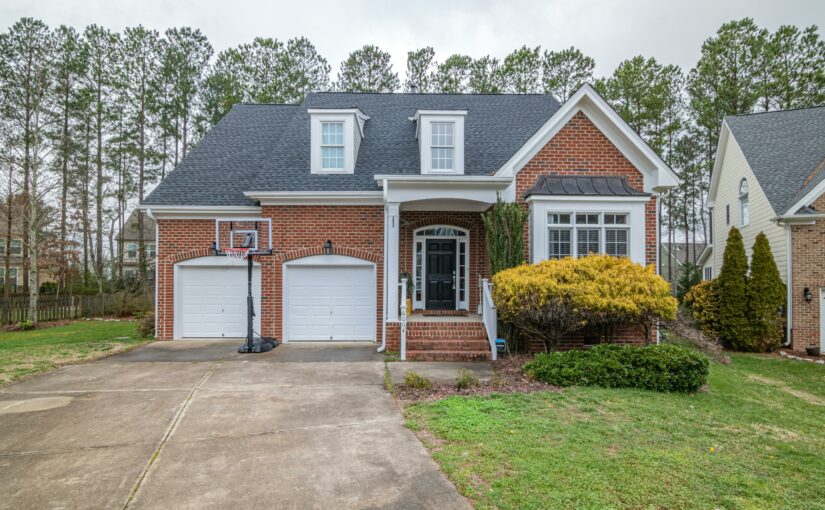Navigating a home purchase in Dallas can be overwhelming with endless listings and complex paperwork. You need a smoother process to avoid stress and costly mistakes during this big decision.
Expert help is the key to simplifying your journey. With the right guidance, you can find your dream home faster and with confidence.
Turn to Ready House Buyer for trusted support. Their expertise ensures your home-buying experience is seamless, helping you close deals efficiently in Dallas.
Setting a Realistic Budget
Starting your home buying journey in Dallas requires a solid budget. Let’s dive into crafting one that balances your dreams with financial reality.
- Determine Your Income Limits: Multiply your annual gross income by 2.5 to estimate a feasible home price range for your budget.
- Factor in Credit and Rates: Your credit score and current mortgage rates heavily influence affordability, so check these early in the process.
- Save for Down Payment: Aim for 3% to 20% of the home price, knowing less than 20% may require private mortgage insurance.
- Account for Closing Costs: Set aside 2% to 5% of the purchase price to cover fees like appraisals and origination costs.
- Plan for Ongoing Expenses: Budget for monthly mortgage payments, taxes, insurance, and maintenance to avoid financial surprises after moving in.
With these steps, you’re on track to create a budget that works. Now, let’s explore how expert help can refine this further.
Steps to Home Searching
Finding the perfect home in Dallas can feel overwhelming. With expert guidance, the search becomes a strategic and exciting adventure worth pursuing.
- Define Your Needs: List must-haves like bedrooms, location, and amenities to narrow down options with your real estate agent.
- Leverage Local Expertise: Dallas agents know neighborhoods inside out, helping you uncover hidden gems that match your lifestyle.
- Use Online Tools: Platforms like Zillow paired with professional advice ensure you don’t miss listings in competitive markets.
- Schedule Tours Efficiently: Work with experts to prioritize viewings, saving time while focusing on homes within your budget.
Teaming up with pros streamlines your search. Next, let’s talk about turning that dream home into a winning offer without stress.
Preparing a Strong Offer
Crafting a standout offer in Dallas’s competitive market is crucial. Let’s break down how expert help can make sellers take notice.
Price It Right
Work with agents to set a competitive price based on market data, ensuring your offer aligns with recent sales in the area.
Include Key Terms
Experts guide you in adding favorable terms like flexible closing dates, showing sellers you’re serious and easy to work with.
Personalize Your Offer
A heartfelt letter, drafted with professional input, can connect emotionally with sellers, setting your bid apart in a crowded field.
Act Swiftly
With guidance, submit offers quickly in hot markets like Dallas, preventing other buyers from swooping in before you seal the deal.
Navigating the Closing Steps
Closing on a home in Dallas involves many steps. Expert help ensures you’re prepared for each, avoiding delays or costly mistakes.
Opening Escrow
Agents assist in setting up escrow accounts, holding funds securely while paperwork progresses, giving you peace of mind during transactions.
Title and Inspections
Professionals coordinate title searches and home inspections, identifying issues early so you’re not caught off guard by hidden problems.
Negotiating Costs
Experts negotiate closing costs on your behalf, potentially saving thousands by ensuring fees are fair and transparent throughout the process.
Final Walk-Through
Before signing, pros join you for a final inspection, confirming the home’s condition matches the agreement, protecting your investment fully.
Securing Mortgage Pre-Approval
Getting pre-approved for a mortgage is a game-changer in Dallas. It shows sellers you’re serious and ready to buy now.
- Understand Pre-Approval Benefits: It’s a lender’s confirmation of your borrowing power, making your offer stronger in a competitive market.
- Gather Financial Docs: Experts help compile pay stubs, tax returns, and bank statements to speed up the application process.
- Boost Seller Confidence: Pre-approval signals to Dallas sellers that financing won’t derail the deal, giving you an edge.
- Act Within Timeframes: Pros ensure you use the pre-approval letter, valid for 90 days, before it expires during house hunting.
With pre-approval in hand, thanks to expert support, you’re positioned as a top buyer. Let’s now find the right lender.
Choosing the Right Lender
Finding a lender in Dallas who fits your needs is vital. Expert advice can simplify this, ensuring you get favorable terms.
Compare Rates and Fees
Agents connect you with lenders offering competitive rates, helping analyze fees to avoid overpaying during your home purchase journey.
Check Lender Reputation
Professionals point you to trusted lenders with strong reviews, ensuring reliability and support throughout the mortgage process without surprises.
Assess Communication Style
Experts match you with lenders who communicate clearly, keeping you informed at every step, which is crucial for stress-free financing.
Explore Loan Options
Guidance helps you understand various mortgage types, from FHA to conventional, tailoring choices to your financial situation and goals.
Evaluating Neighborhood Safety
Before buying in Dallas, checking neighborhood safety is a must. Experts make this easier, helping you settle with confidence.
Access Crime Data
Realtors provide resources like crime maps from sites like SpotCrime, revealing local statistics to ensure you choose a secure area.
Visit at Different Times
Agents suggest walking neighborhoods day and night, observing conditions like lighting and upkeep to gauge safety beyond just numbers.
Connect with Locals
Pros encourage chatting with potential neighbors during tours, gaining firsthand insights on community vibe and safety concerns you might face.
Research Community Resources
Expert help includes checking local websites or apps like Nextdoor for info on parks, events, and services enhancing neighborhood security.
Analyzing Market Trends
Understanding Dallas market trends gives you an edge. Experts break down data, helping time your purchase for the best deal.
Track Price Movements
Realtors analyze recent sales data, showing whether prices are rising or stabilizing, so you know when to jump into the market.
Monitor Inventory Levels
Professionals keep tabs on housing supply, advising if it’s a buyer’s or seller’s market, which impacts your negotiation power significantly.
Assess Economic Factors
Agents highlight local job growth or development projects, predicting how these could affect future home values in Dallas neighborhoods.
Stay Updated Daily
With expert access to reports from sources like the National Association of REALTORS®, you’re always informed on the latest market shifts.
To Your Success
Ready to make your Dallas home purchase seamless? Lean on expert guidance for every step, from budgeting to closing. If circumstances change, explore options like Sell my house in Dallas for a quick transition. Take charge now and turn your dream home into reality!












